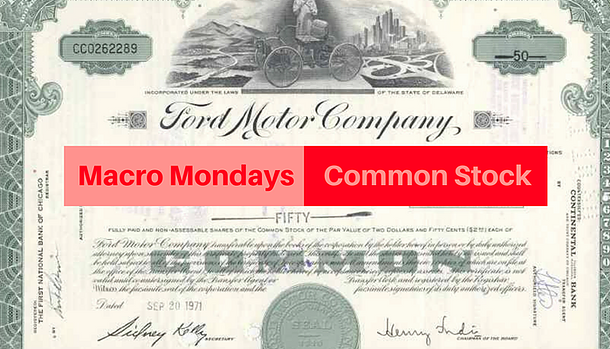
Welcome back to Macro Mondays! If you have ever owned a stock, you may have wondered about the process the company had to go through to issue that piece of ownership. The explanation of that process begins by discussing the basic foundation of the stock market — the common stock.
What is a ‘Common Stock’?
Common stock is a security that represents ownership in a corporation. Holders of common stock exercise control by electing a board of directors and voting on corporate policy. Common stockholders are on the bottom of the priority ladder for ownership structure; in the event of liquidation, common shareholders have rights to a company’s assets only after bondholders, preferred shareholders and other debt holders are paid in full.
What is the difference between ‘common’ and ‘preferred’ stock?
If a company goes bankrupt, the common stockholders do not receive their money until the creditors and preferred shareholders have received their respective share of the leftover assets. This makes common stock riskier than debt or preferred shares. The upside to common shares is they usually outperform bonds and preferred shares in the long run. Many companies issue all three types of securities. For example, Wells Fargo & Company has several bonds available on the secondary market. It also has preferred stock, such as its Series L (NYSE: WFC-L) and common stock (NYSE: WFC).
When was the first Common Stock Created?
The first ever common stock was established in 1602 by the Dutch East India Company and introduced on the Amsterdam Stock Exchange. In 2016, there are over 4,000 stocks traded on major exchanges and over 15,000 traded over the counter. Larger U.S.-based stocks are traded on a public exchange such as the New York Stock Exchange or NASDAQ. There are also several international exchanges for foreign stocks, such as the London Stock Exchange or the Japan Stock Exchange. Companies that are smaller in size and unable to meet an exchange’s listing requirements are considered unlisted. These unlisted stocks are traded on the Over-The-Counter Bulletin Board (OTCBB) or pink sheets.













Leave A Comment